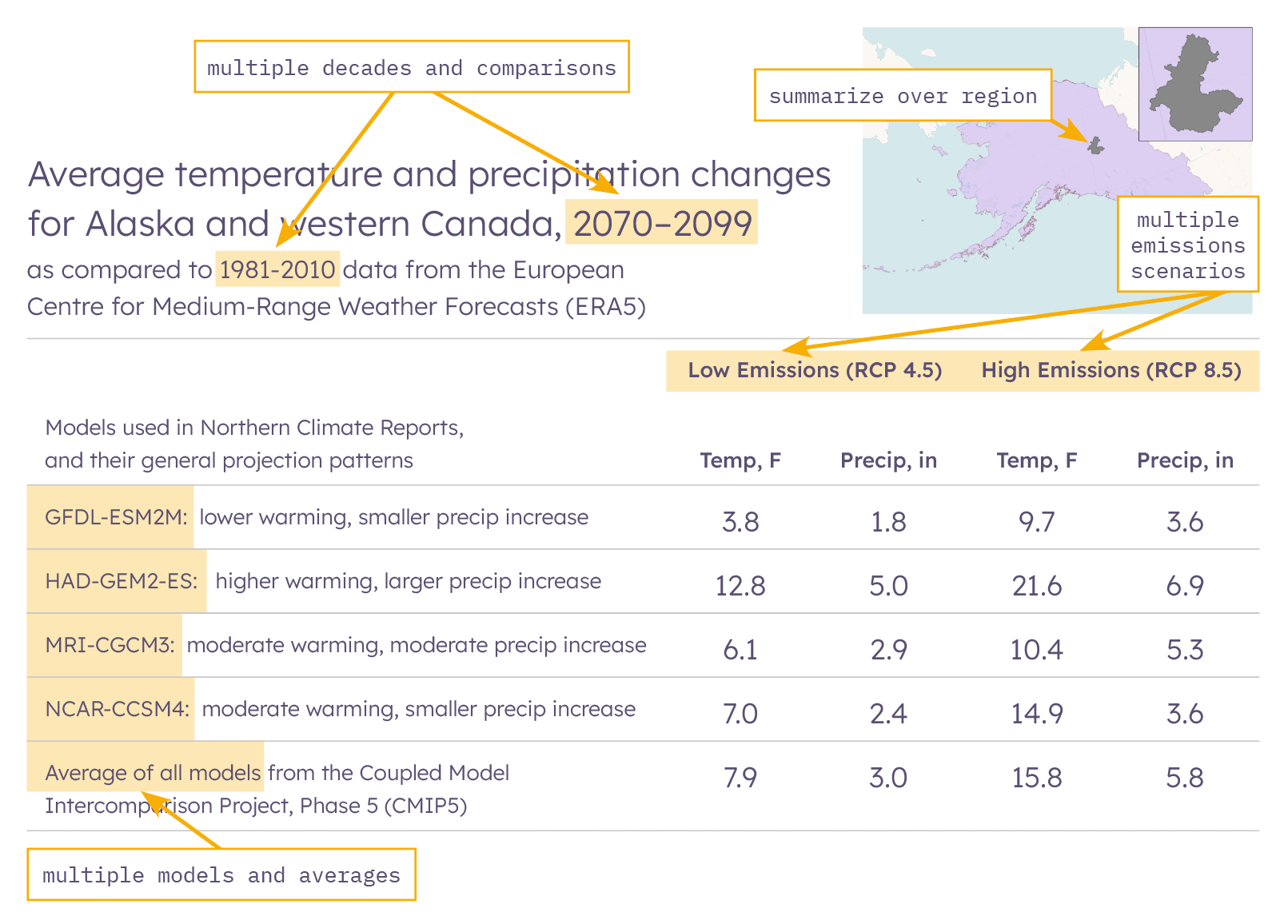GFDL ESM2M — Developed by the NOAA Geophysical Fluid Dynamics Laboratory (GFDL), this Earth System Model version 2M (ESM2M) models the movement of carbon through the earth system. Learn more about this model
HadGEM2-ES — Developed by the UK Met Office Hadley Centre (Had), this Global Environment Model version 2 (GEM2) incorporates Earth Systems (ES) including atmospheric land and ocean carbon cycles, dynamic vegetation, ocean biology, and atmospheric chemistry. Learn more about this model
MRI CGCM3 — Developed by Japan’s Meteorological Research Institute (MRI), this Coupled Global Climate Model version 3 (CGCM3) includes models for atmosphere-land, aerosols, and ocean-ice. Learn more about this model
NCAR CCSM4 — Developed by the National Center for Atmospheric Research (NCAR), the Climate System Model version 4 (CCSM4) is composed of four separate models simultaneously simulating Earth's atmosphere, ocean, land surface and sea ice. Learn more about this model
Northern Climate Reports employs these (and more) models, all of which perform well in the North, so that data users can think broadly about the range of possible futures. See this paper, which describes the models, model selection process, and downscaling of model output.
Representative Concentration Pathways (RCPs) have been developed for the climate modeling community as a basis for modeling experiments. RCPs portray possible future greenhouse gas and aerosol emissions scenarios. RCP scenarios are not specific policies, demographics, or economic futures; instead, they are defined by total solar radiative forcing (atmospheric energy changes caused by greenhouse gas emissions, measured in watts per square meter) by 2100.
- RCP 4.5: the concentration of atmospheric carbon that warms Earth at an average of 4.5 watts/m2. In this scenario, emissions peak around 2040 and then decline.
- RCP 8.5: the concentration of atmospheric carbon that warms Earth at an average of 8.5 watts/m2. In this scenario, emissions continue to rise throughout the 21st century. Climate change projected under RCP 8.5 will typically be more acute than under RCP 4.5.
RCP 4.5 and RCP 8.5 are displayed in Northern Climate Reports, allowing users to assess emissions-dependent variability and evaluate a moderate scenario alongside a more extreme scenario. Learn more about RCPs
 Climate
Climate
